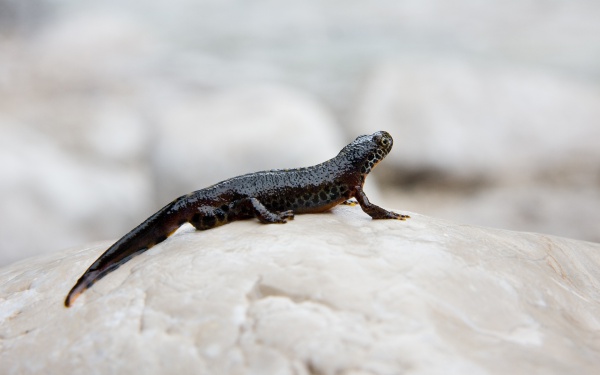Facts About Alpine newt
The Alpine Newt is a captivating amphibian native to continental Europe, with introduced populations in Great Britain and New Zealand. These newts typically measure between 7 to 12 centimeters and are distinguished by their dark grey to blue backs and vibrant orange bellies. During the breeding season, males become even more colorful to attract mates.
Alpine newts thrive in forested habitats but migrate to water bodies like ponds and lakes for breeding. Their courtship involves elaborate displays wherein males deposit spermatophores, which females then use for fertilization. Females lay their eggs on the leaves of aquatic plants, and the larvae eventually metamorphose into terrestrial efts before becoming fully grown adults.
Approximately 20 million years ago, Alpine Newt populations began to diverge, leading to the recognition of four distinct subspecies. Genetic studies have placed this species in the monotypic genus Ichthyosaura. Despite being listed as "Least Concern" on the IUCN Red List, Alpine newts face threats such as habitat destruction, pollution, and the introduction of predatory fish like trout into their breeding sites. These threats have led to declining populations and local extinctions.
Alpine newts are medium-sized and stocky, with a preference for nocturnal activities. They spend most of the year on land, returning to water only for breeding. Interestingly, some adults exhibit paedomorphy, retaining their gills and remaining aquatic throughout their lives. Their diet consists of various invertebrates, and they face predation from a range of animals.
These newts inhabit a variety of environments from forests to aquatic breeding sites such as puddles, ponds, and lakes. They are relatively common across Europe, from northwestern France to the Carpathian Mountains in Romania. However, threats like habitat destruction, pollution, and the introduction of non-native species pose significant risks. Conservation efforts are crucial to ensure the survival of these unique amphibians.

 Hungary
Hungary